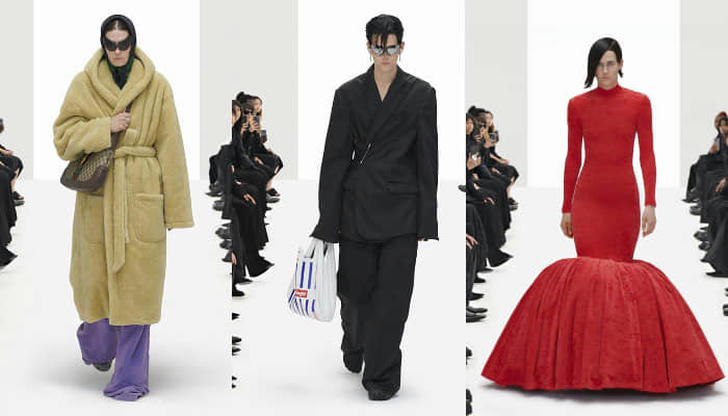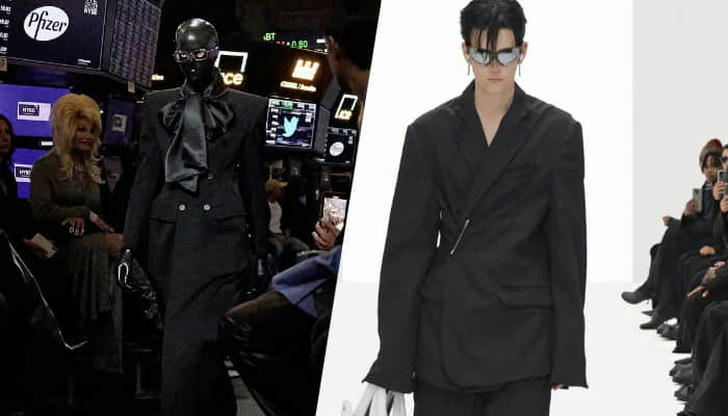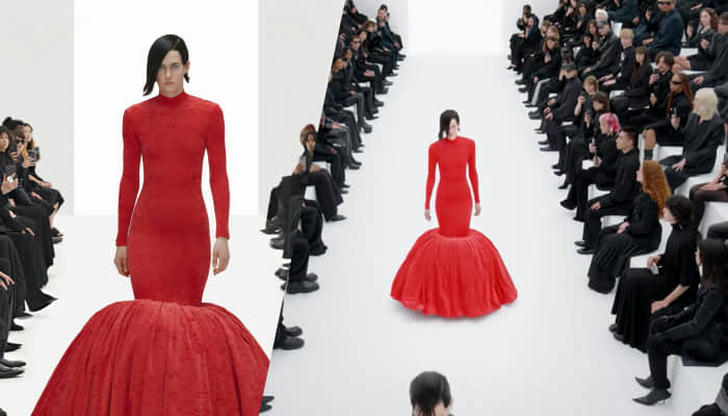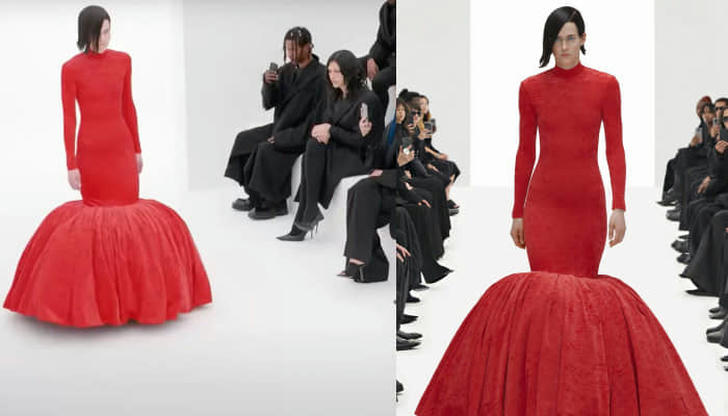Balenciaga Spring 2022: A Future World Interwoven with Reality and Virtuality

"Post-pandemic era"—a concept familiar yet alien to everyone. What's familiar is that we all exist in this era, while what's alien is the rarity of those who can foresee the ever-changing tomorrow.
From Summer 2021 to Fall 2021, Balenciaga presented its aspirations and imaginations for the post-pandemic era through imagery and gaming. In the Spring 2022 show, released on June 6th, Creative Director Demna Gvasalia once again used fashion as a medium to scrutinize and interpret the present, while ceaselessly exploring a future world interwoven with reality and virtuality. From digital clones to the "crossover" of Gucci and Balenciaga, this runway show sparked high levels of discussion on social media, showcasing a world of digital clones.

A World of Digital Clones
The advancement of digital technology continuously intensifies people's fascination with images and landscapes, while the quest for authenticity is concurrently being eroded.
As digital runways become the new norm in the post-pandemic era, Balenciaga applies digital technology to the presentation of the show, entrusting each look to the artist Eliza Douglas. In the film directed by Quentin Deronzier, Eliza appears in a series of digital clone forms, some using face swap technology, while others capture her facial imagery through CG scanning for digital grafting.
Eliza Douglas Showcased 44 Looks Solo on the Runway.
The Spring/Summer 22 collection, featuring 44 looks, was entirely embodied by artist Eliza Douglas—utilizing digital face swap technology or CG sketch grafting to replicate and paste her face onto various outfits. After countless clones with different makeup and styling, the cloned faces retain an unchanging expression, appearing as detached and cool as an AI.
Eliza Douglas, an American artist born in the 1980s, was discovered by Demna Gvasalia and transformed into a model with a distinctive aura. Prior to her collaboration with Demna Gvasalia, Eliza Douglas had no runway experience. When she asked Demna how to convey the essence of the fashion, he simply told her: just be yourself.
Eliza Douglas is a frequent presence in Balenciaga's runway shows and advertisements, often taking on the pivotal roles of opening and closing the show.

Digital Runways Are No Longer Substitutes for Physical Shows.
The models take to the minimalist catwalk, accompanied by sci-fi inspired music composed by BFRND, which includes a rendition of the French classic "La Vie En Rose" recited in AI voice. The post-production of the video involves planar tracking, rotoscoping, machine learning, and 3D modeling to achieve a surreal effect. It's an imaginative vision of the future: the gradual awakening of artificial intelligence, prompting a longing for a bygone world's concept of 'romance'.
Clearly, digital runways are no longer substitutes for physical shows. This presentation style not only offers audiences a fresh perspective on fashion but also enhances viewer engagement through content that is both entertaining and satirical.
The magazine tote bags made of cowhide and the fast-food box handbags crafted from carbon fiber eco-friendly materials are inspired by everyday life.

The "Crossover" of Gucci and Balenciaga

Following a collaboration at Gucci's centennial show, Balenciaga once again conceptually reinterprets Gucci's iconic patterns and dubs the initiative "The Hacker Project." By merging the brand elements of Gucci and Balenciaga, it explores and questions the fashion industry's views on originality, forgery, and appropriation.
The sole red velvet evening gown that closed the show, a tribute to the late drag artist Divine, suggests that despite the distractions of "deepfake," unbounded beauty still possesses a genuine and penetrating power.

